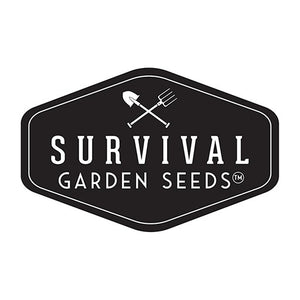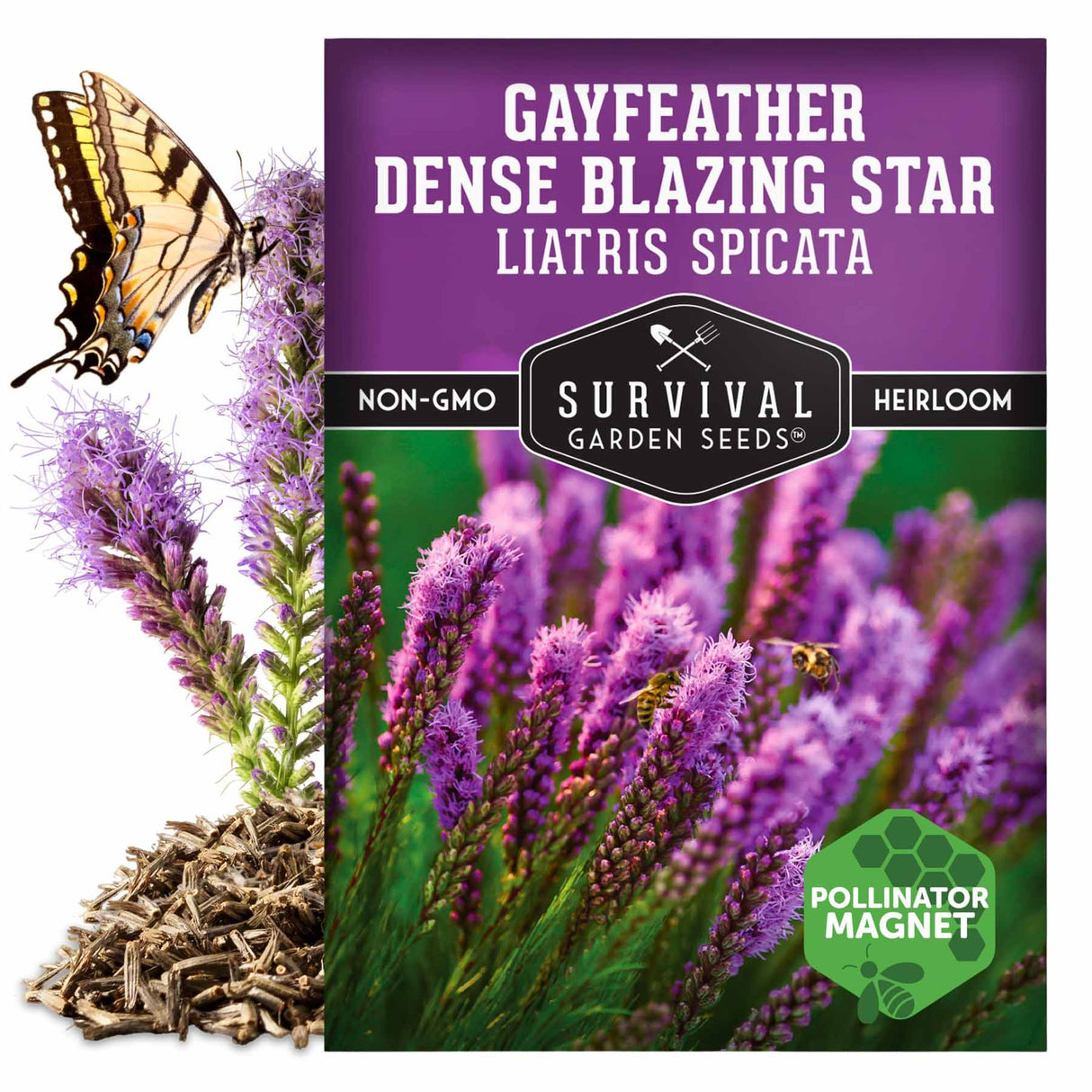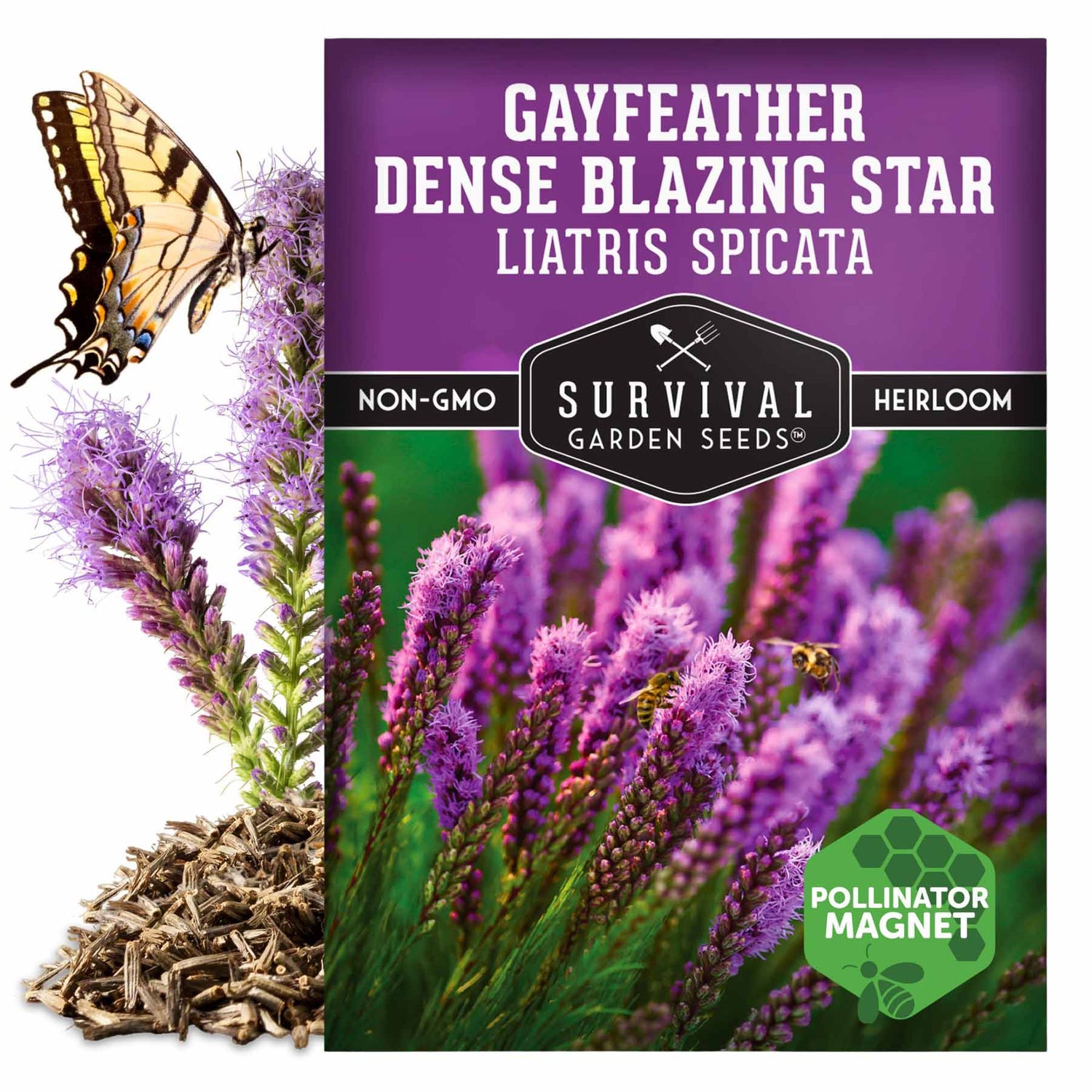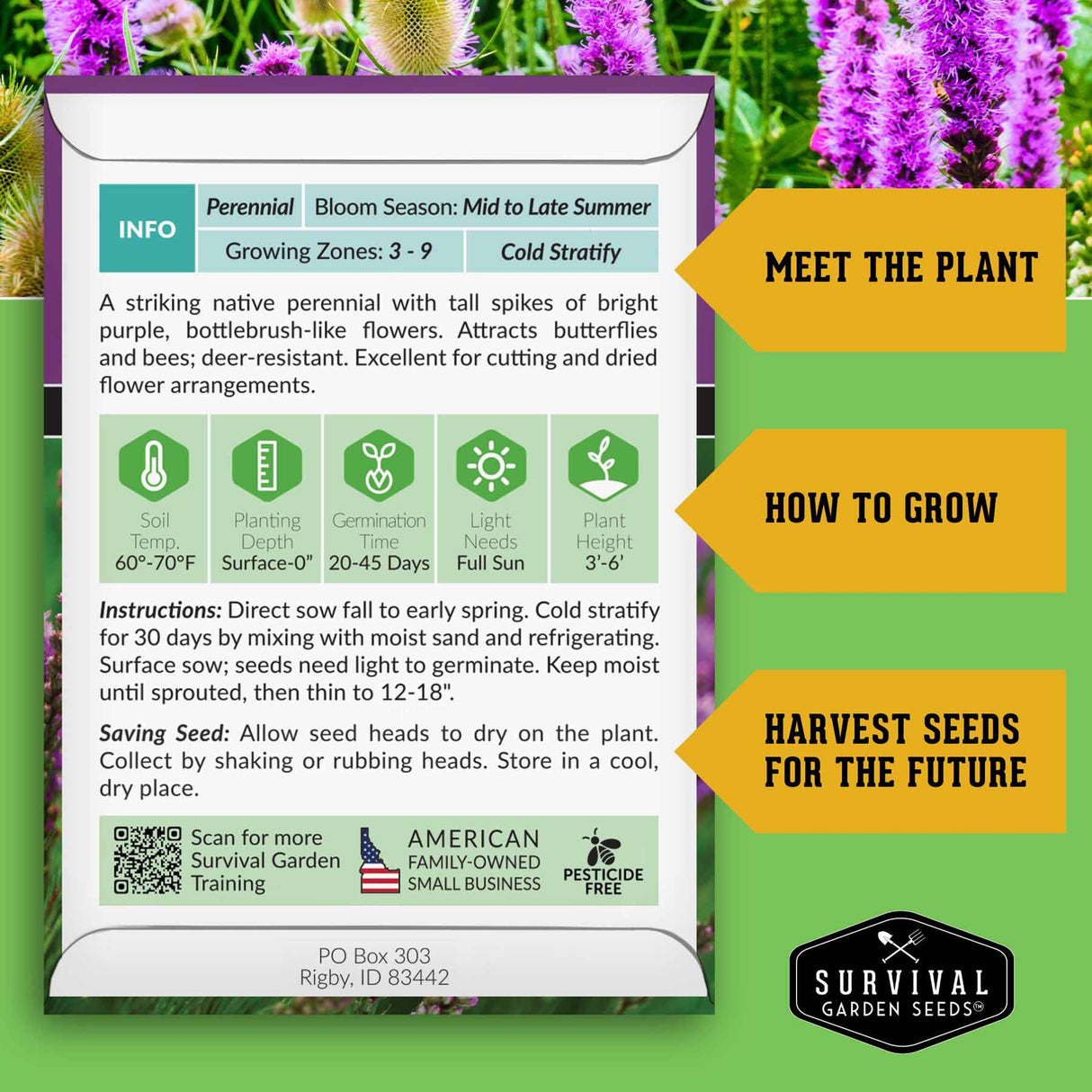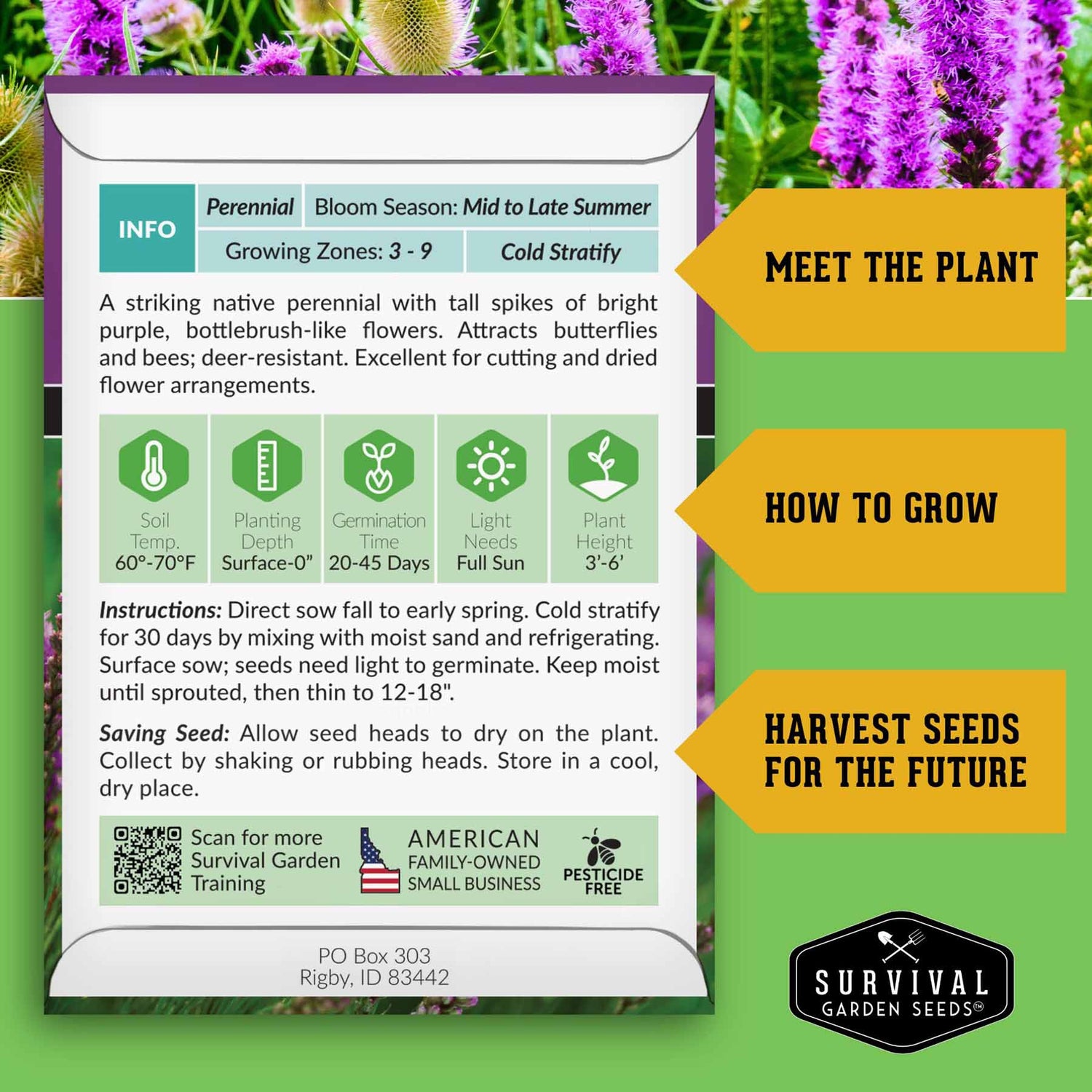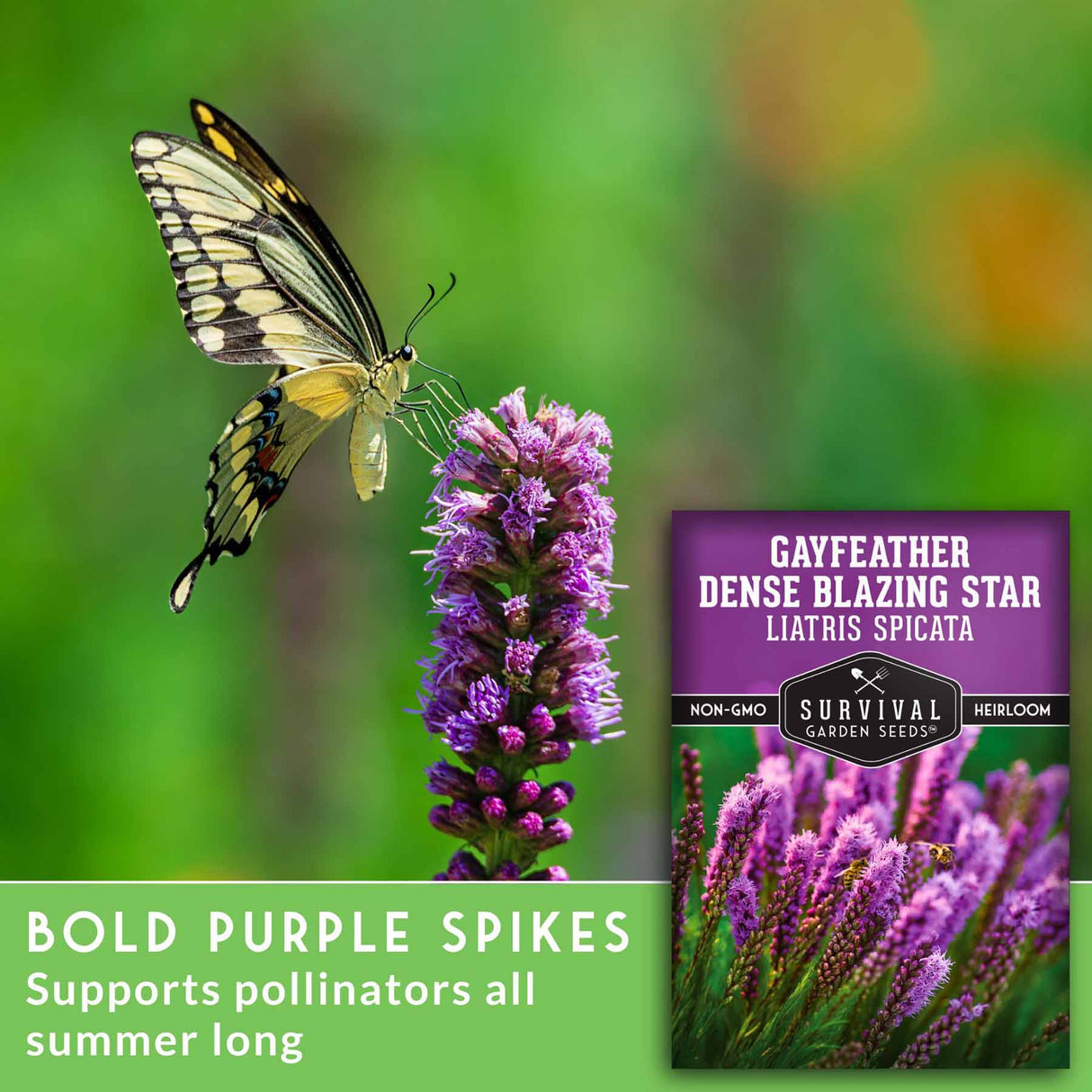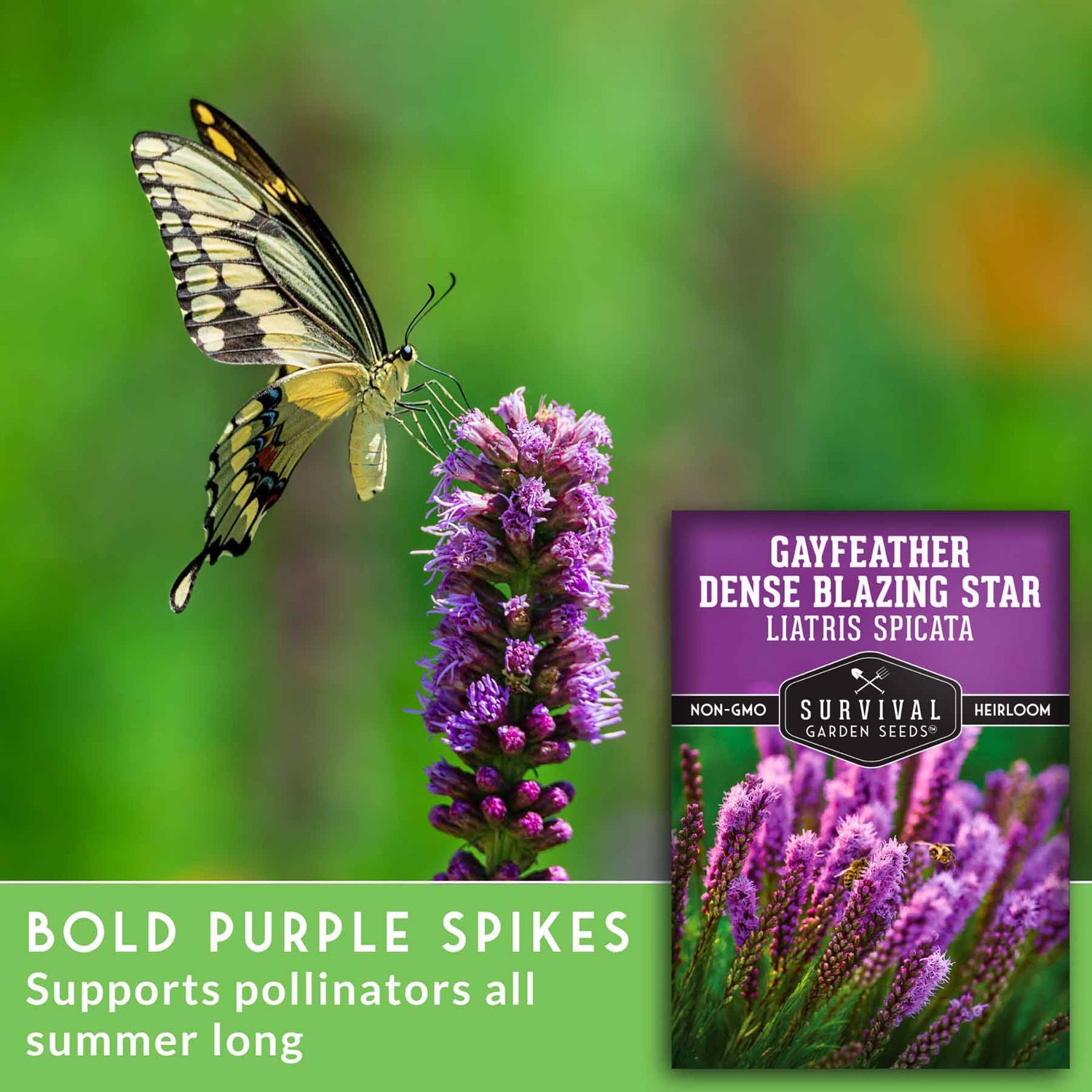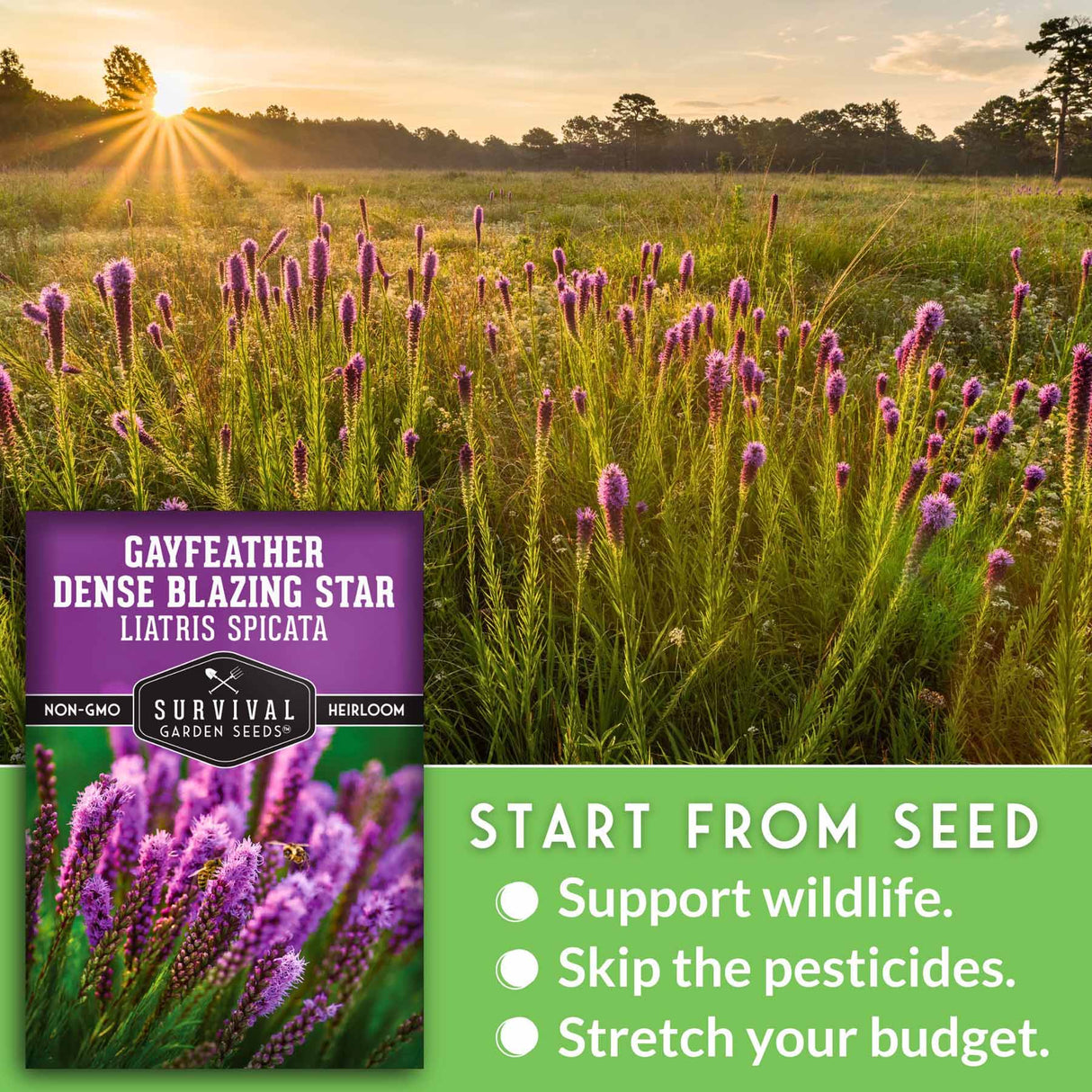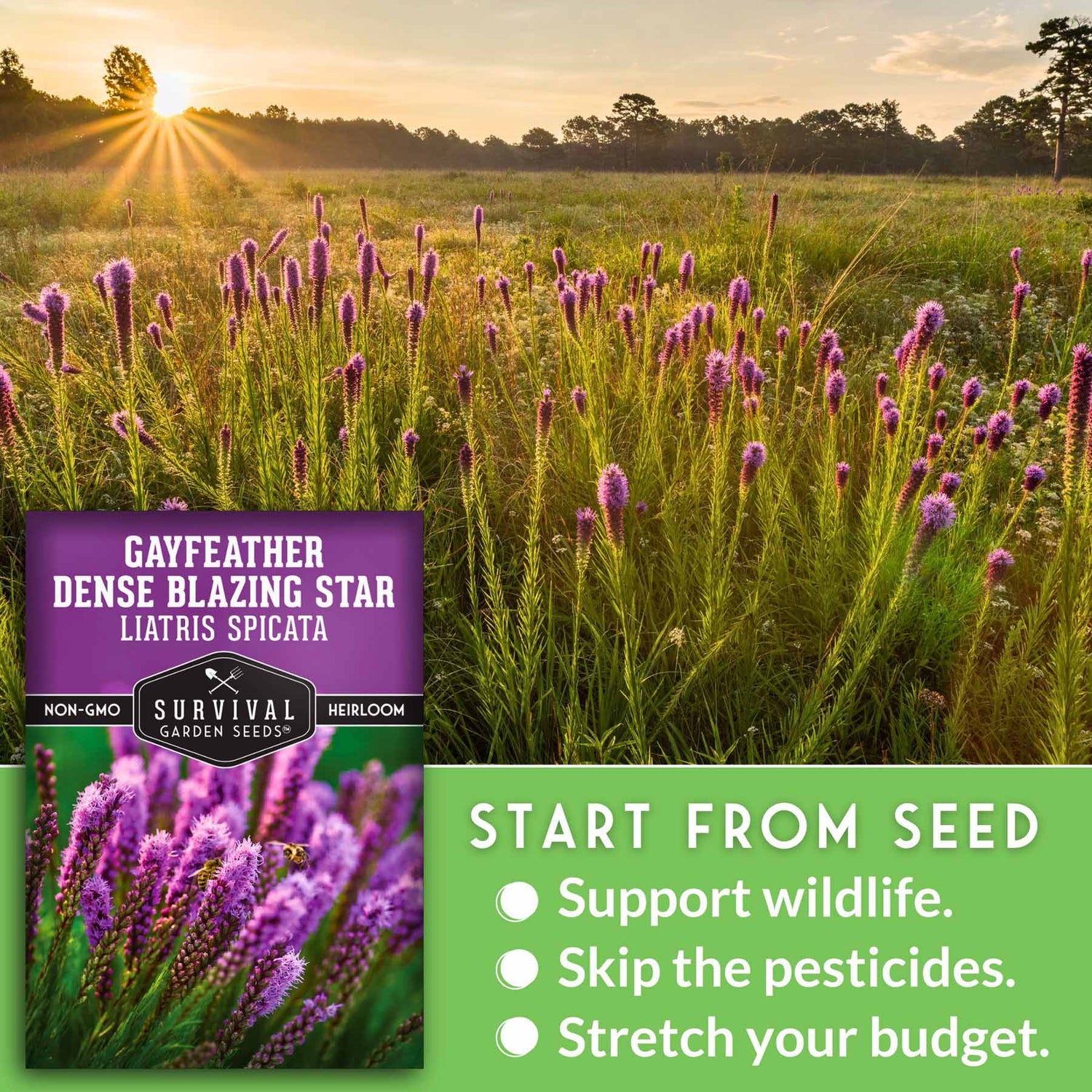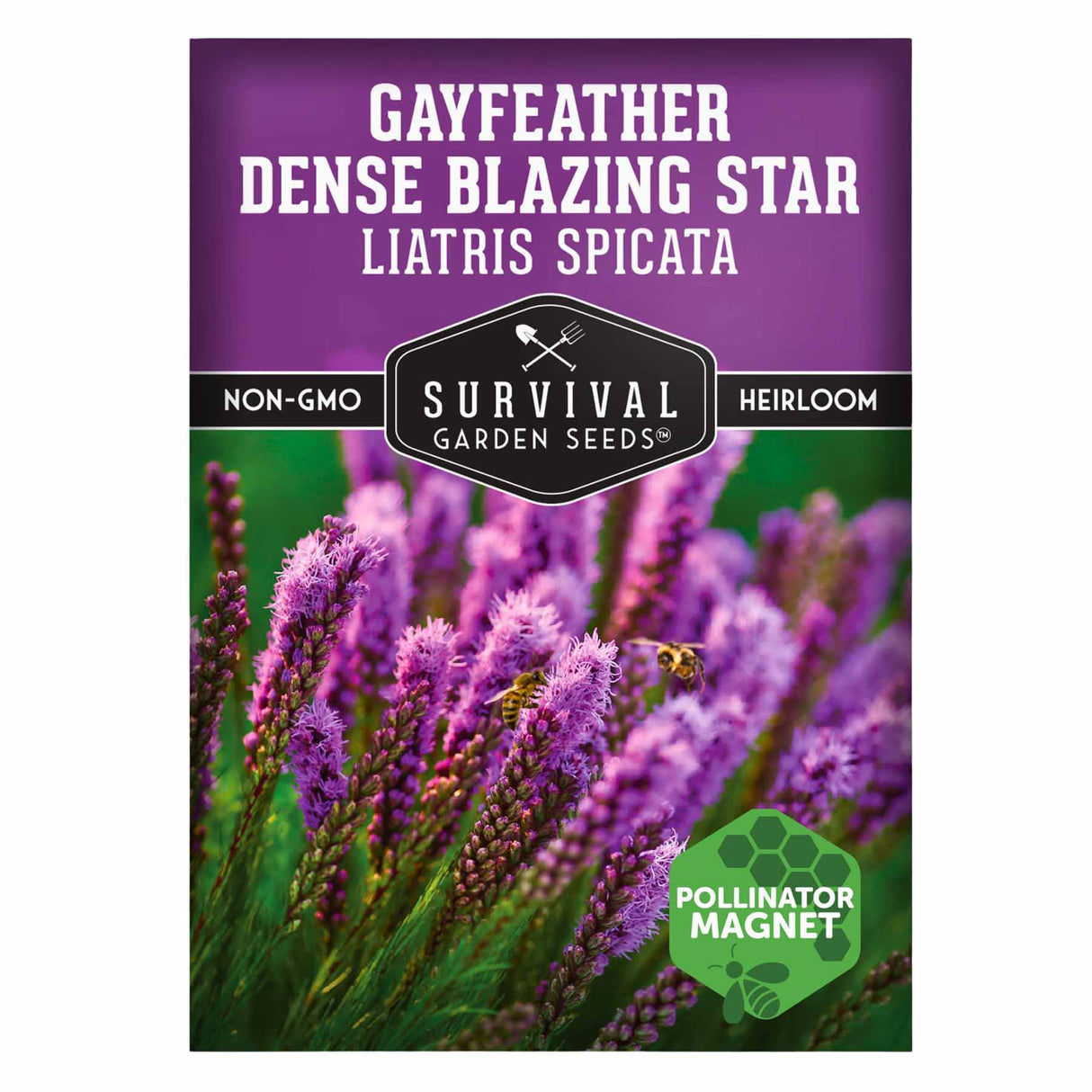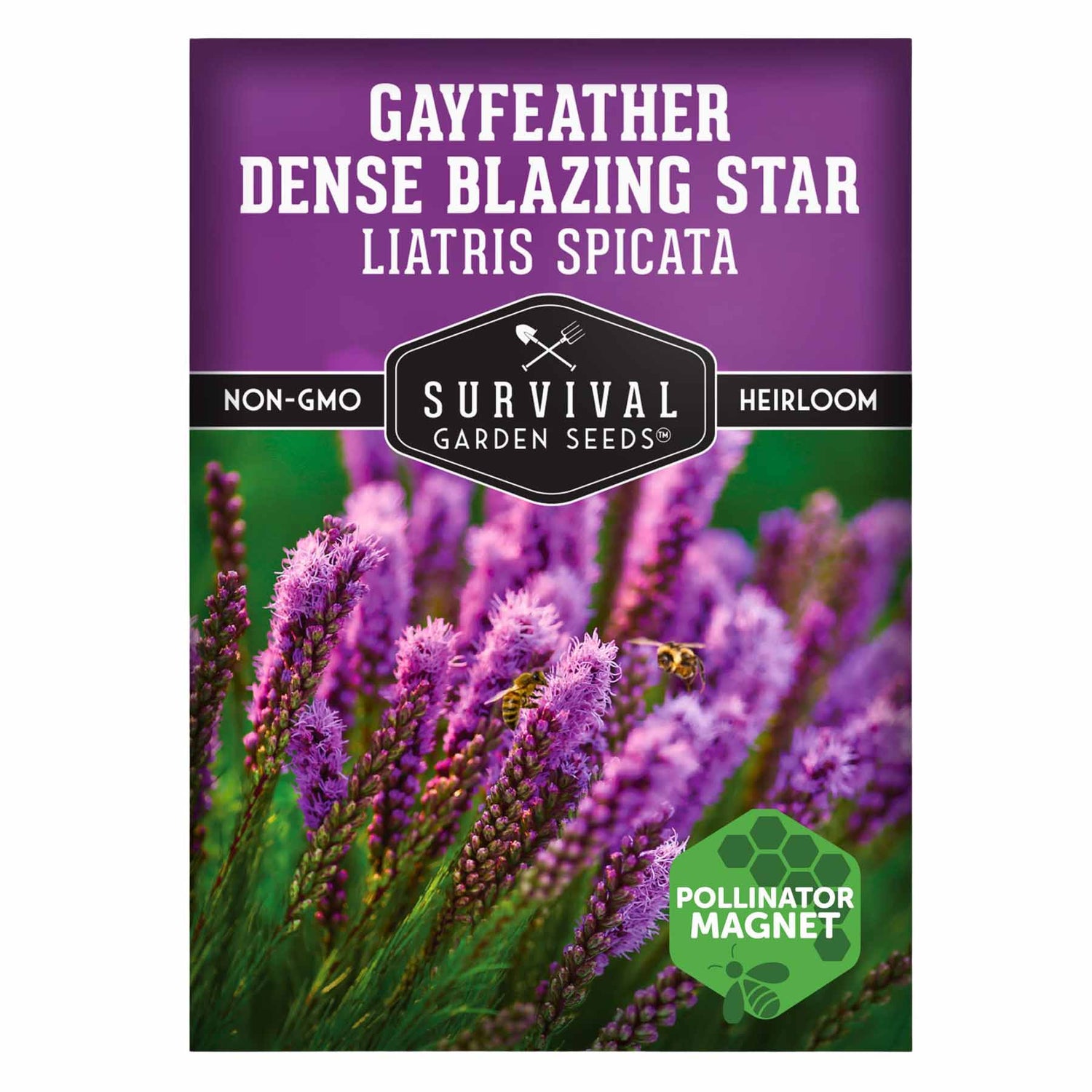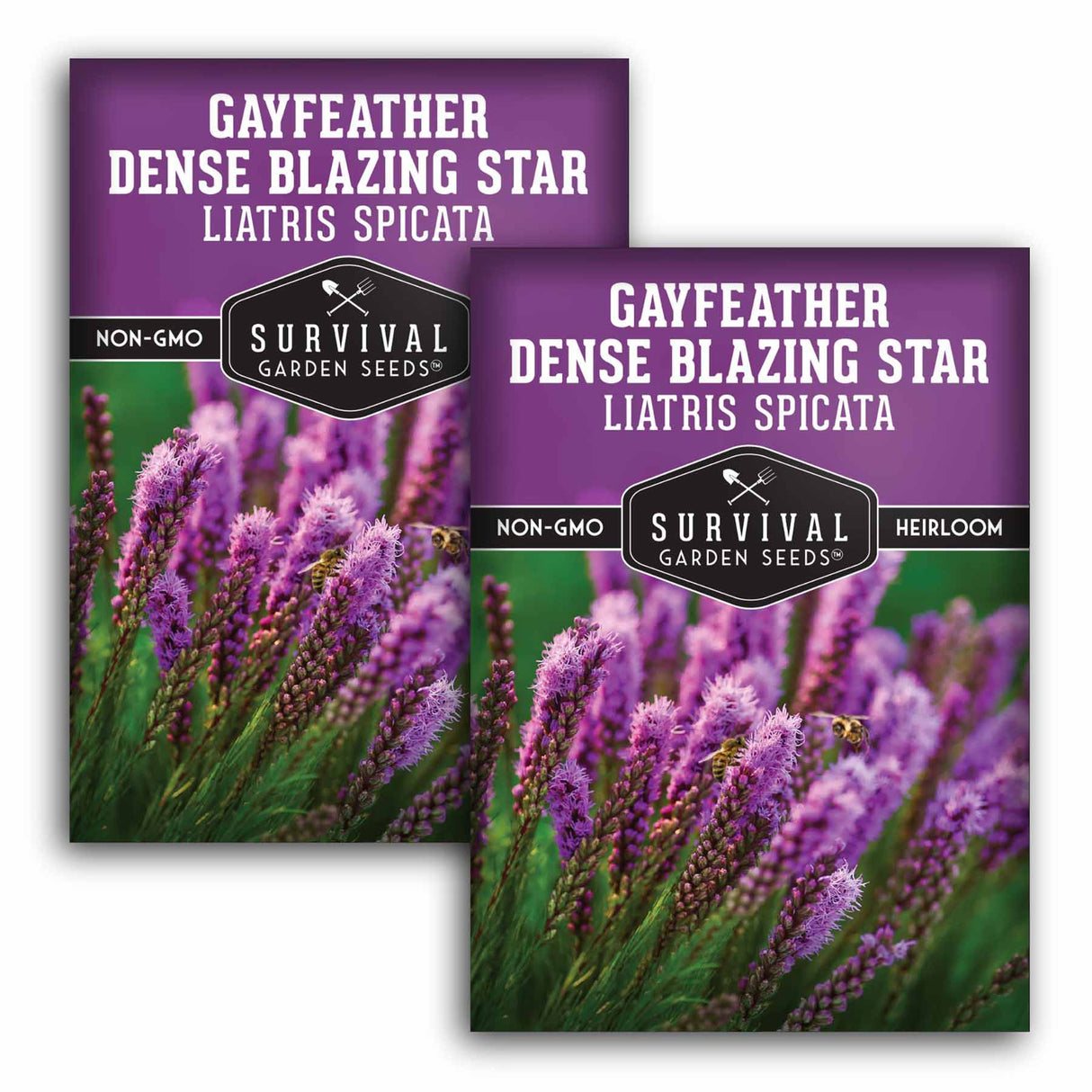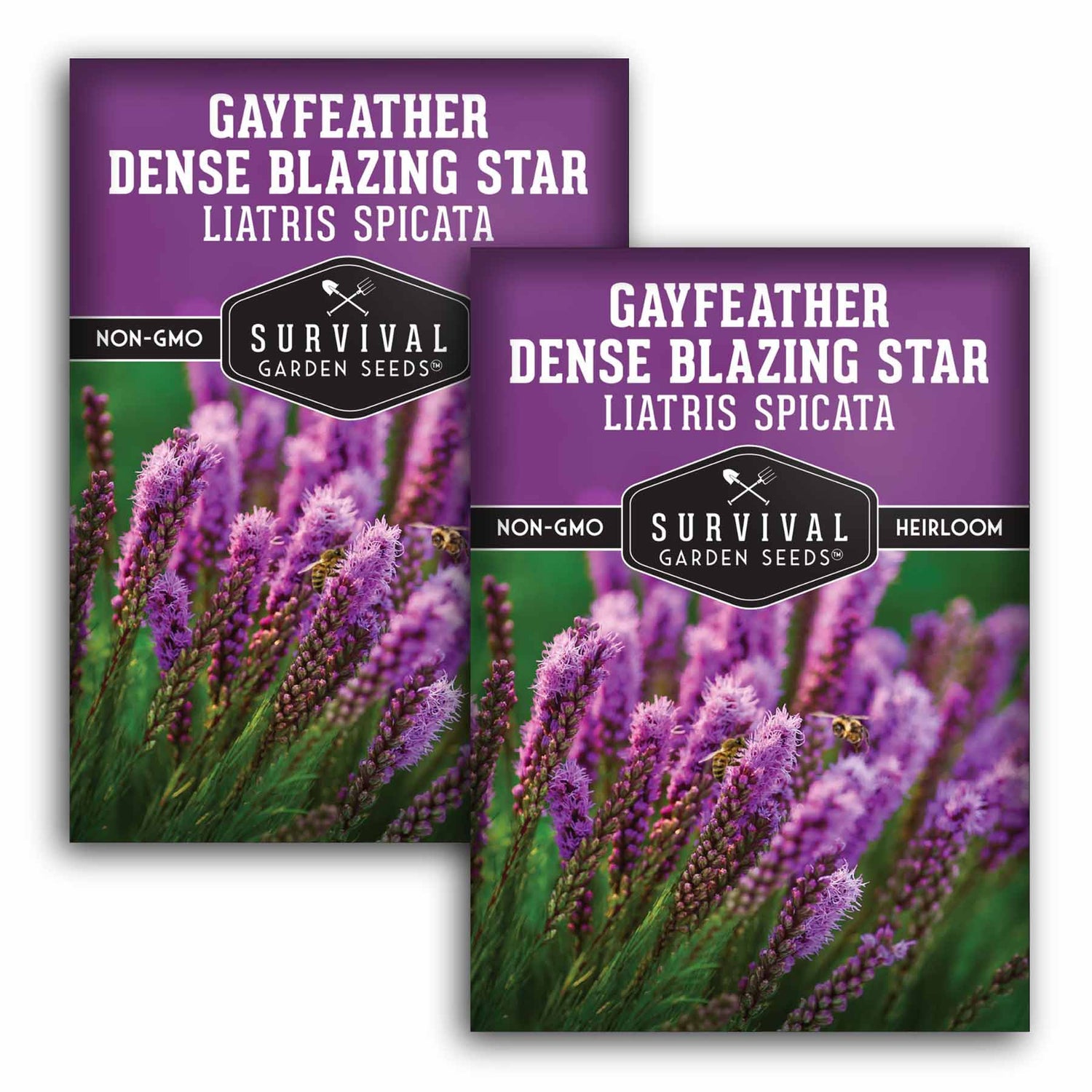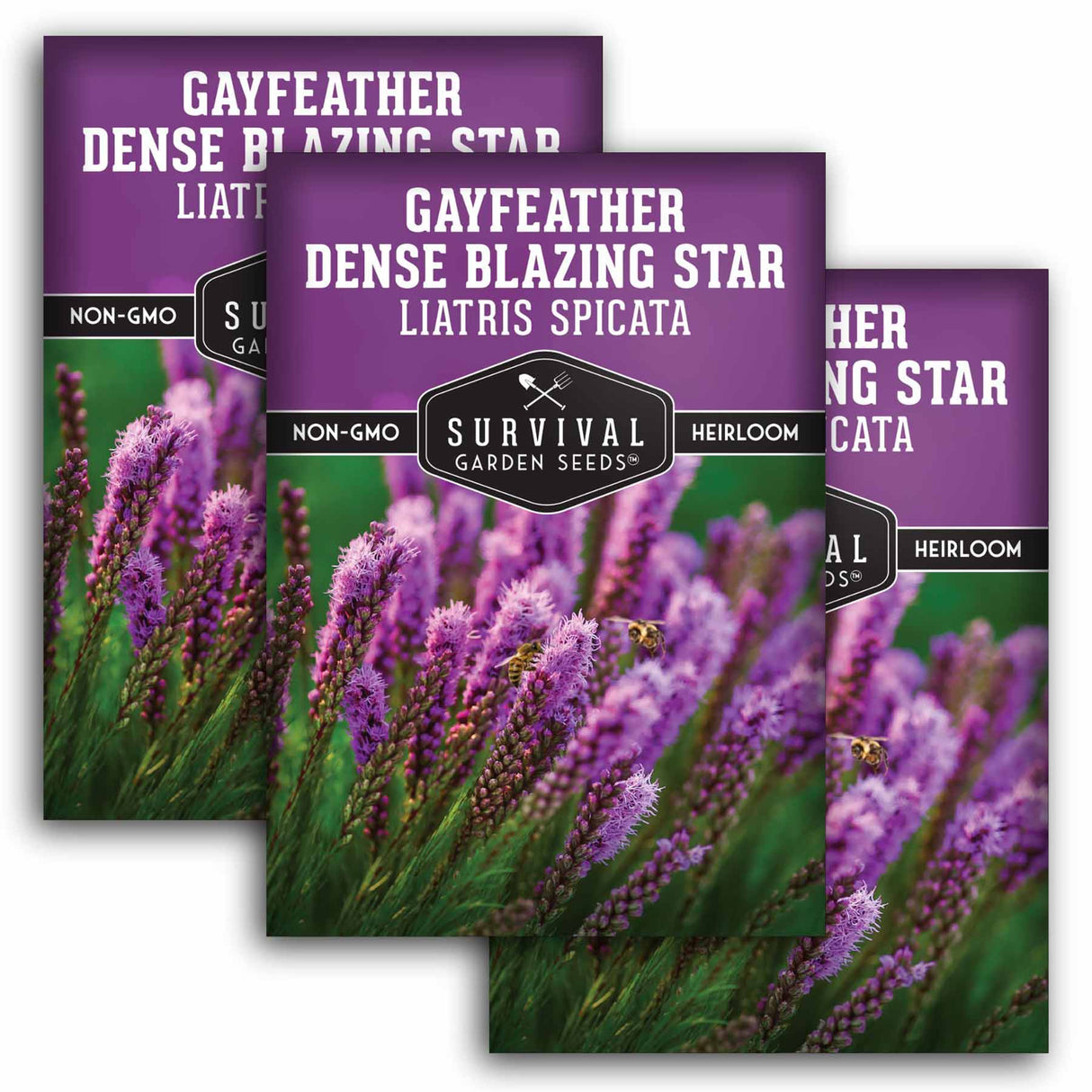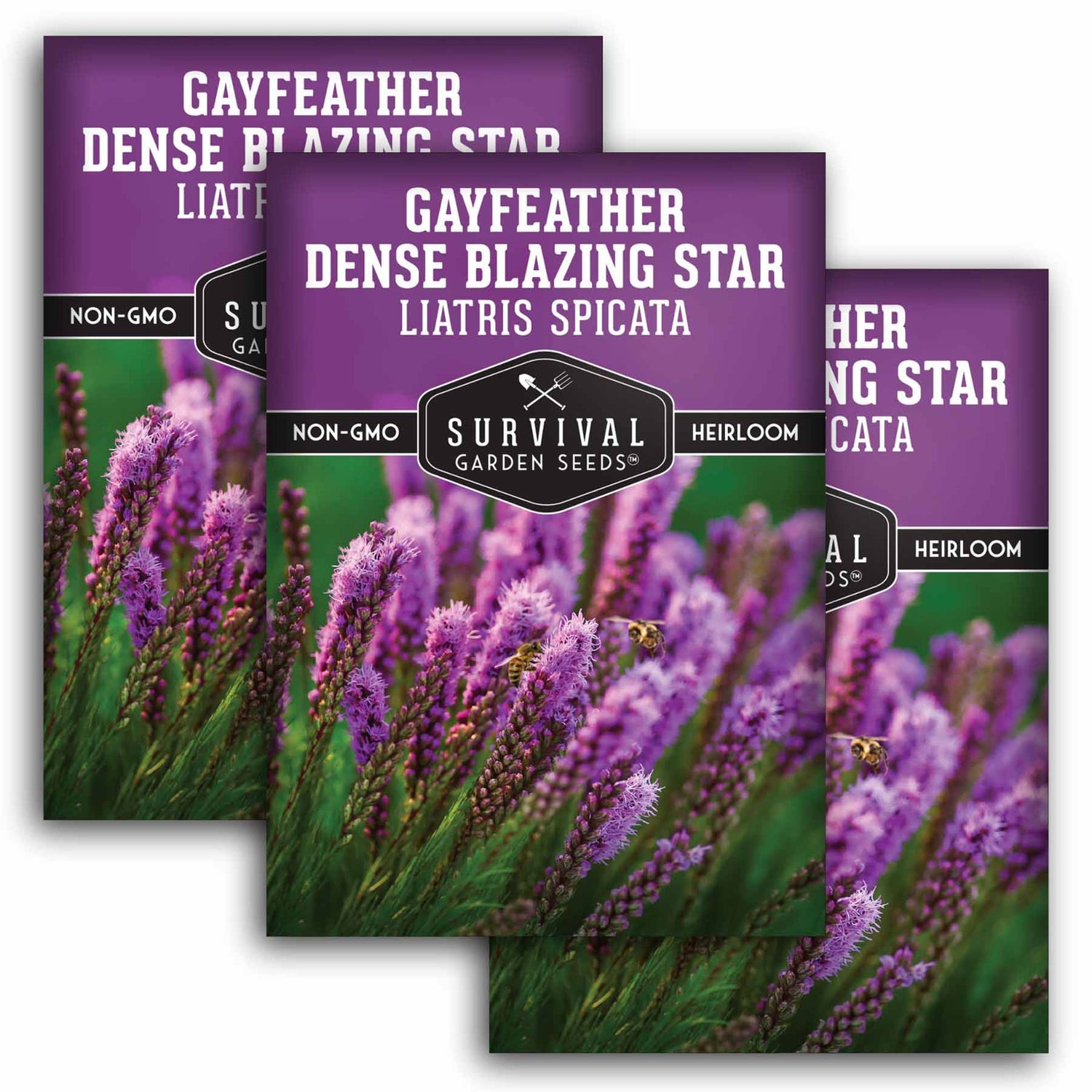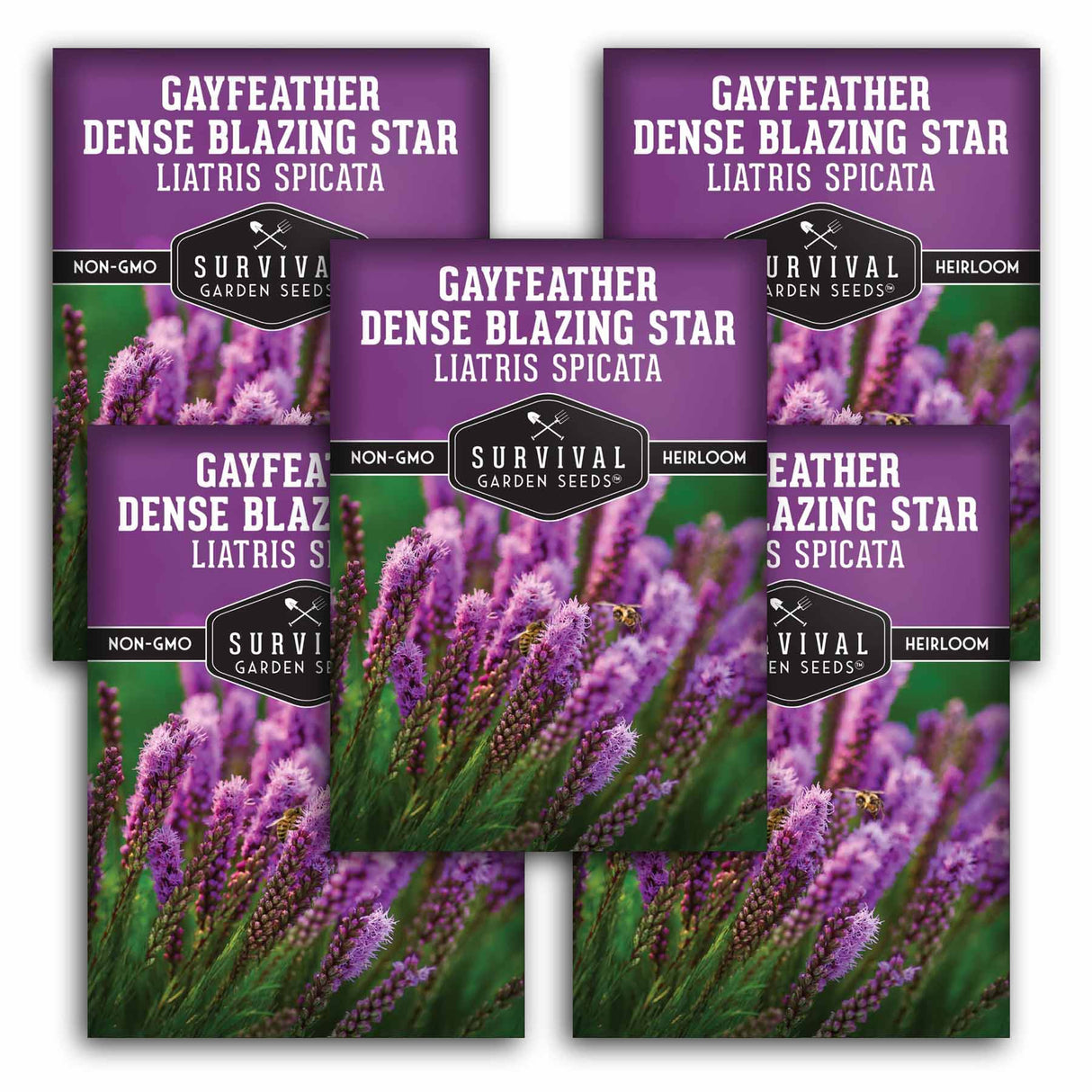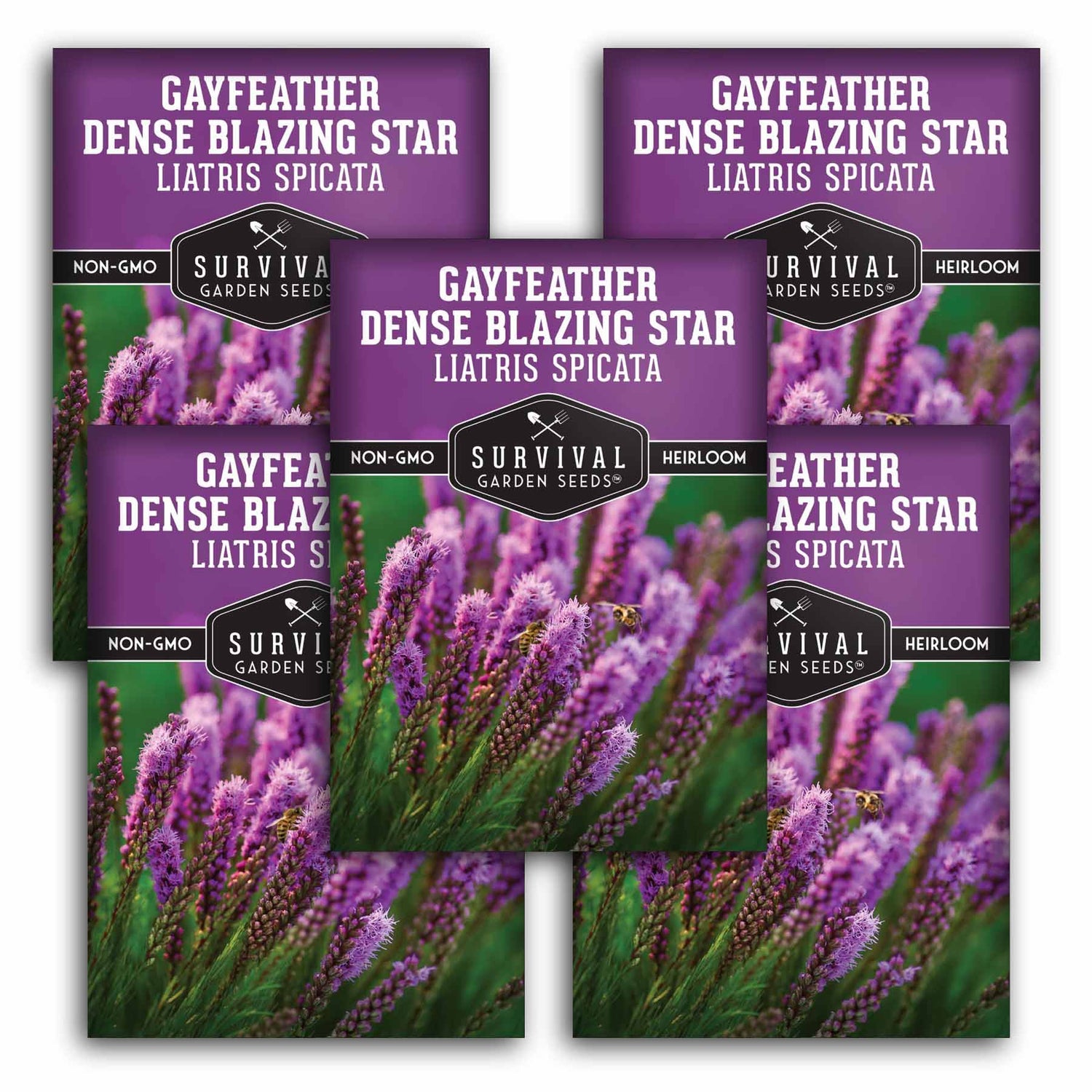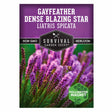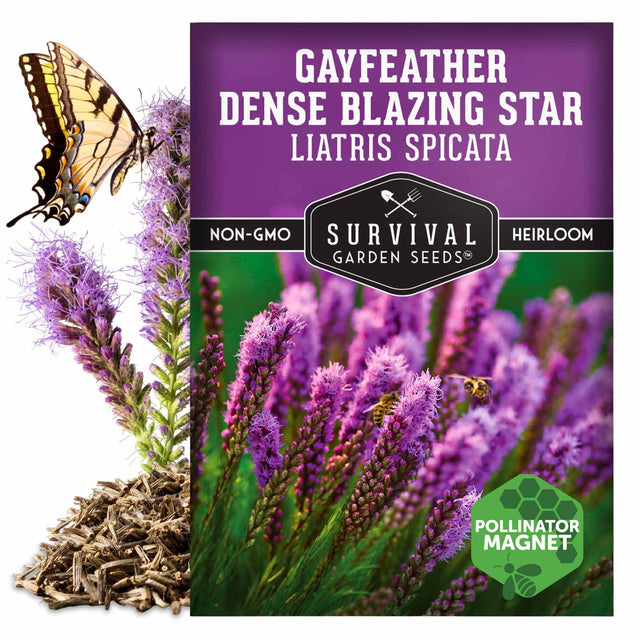Dense Blazing Star Seeds - Gayfeather - Liatris spicata
Dense Blazing Star Seeds - Gayfeather - Liatris spicata - 1 Packet is backordered and will ship as soon as it is back in stock.
Couldn't load pickup availability
Gayfeather, Prairie Feather, Liatris, or Dense Blazing Star - whatever you call it, this wildflower stands out. With its spectacular tall spikes of bright purple, bottlebrush flowers that bloom from top to bottom in mid to late summer, it creates dramatic vertical elements that look beautiful in any landscape. This striking North American native perennial also produces some of the most distinctive and long-lasting cut flowers available, retaining their vibrant color and form fresh and dried for stunning floral arrangements that preserve summer's beauty all year round.
This impressive perennial reaches 3-6 feet in height and develops from underground corms that provide excellent drought tolerance once established. Native across much of North America, Gayfeather thrives in zones 3-9 and adapts to various soil types while preferring consistent moisture during establishment. The unique top-down blooming pattern and deer resistance make it ideal for both formal garden borders and naturalized prairie settings.
Perfect for cutting gardens, pollinator habitats, prairie restorations, and dramatic border plantings, this versatile wildflower attracts an exceptional diversity of beneficial insects including Monarchs, swallowtails, honey bees, and specialized moths. Create stunning seasonal displays while supporting pollinator populations with this premium dual-purpose native that delivers both garden beauty and excellent cut flower harvests.
- Exceptional Pollinator Plant - Attracts Monarchs, swallowtails, painted ladies, and other butterflies as well as native bees and specialized blazing star moths
- Dramatic 3-6 Foot Spikes - Creates striking vertical garden interest with a unique top-down blooming pattern for extended seasonal interest
- Long-Lasting Cut Flower - Produces tall spikes of vibrant purple bottlebrush blooms that last exceptionally well both fresh and dried
- Versatile Soil Adaptation - Thrives in loam, sandy, or clay soils with good drought tolerance once established through underground corm development
- Deer-Resistant Native Perennial - Provides reliable multi-season performance across zones 3-9. See packet instructions and follow cold stratification stesp for successful establishment
Heirloom Native Plant Seeds
All of our seeds are open-pollinated, non-GMO, heirloom varieties with tested germination rates
Specifications
Specifications
-
Botanical Name
-
Seasonality
-
Planting Zones
-
Light
-
Soil Temp for Germination
-
Germination Time
-
Planting Depth
-
Plant Size
-
Growing Instructions
-
Seed Saving Instructions
Payment & Security
Your payment information is processed securely. We do not store credit card details nor have access to your credit card information.

Native Perennials Are Worth The Wait!
Native perennials may not bloom in their first year. When planted from seeds, perennials put almost all of their energy into establishing strong, healthy root systems in the first year of growth. In the second year, you should see larger plants and some blooms. After the third year, you will be able to enjoy a bounty of beautiful blooms. Trust us! It will be worth the wait!
Cold Stratification Aids Germination
-
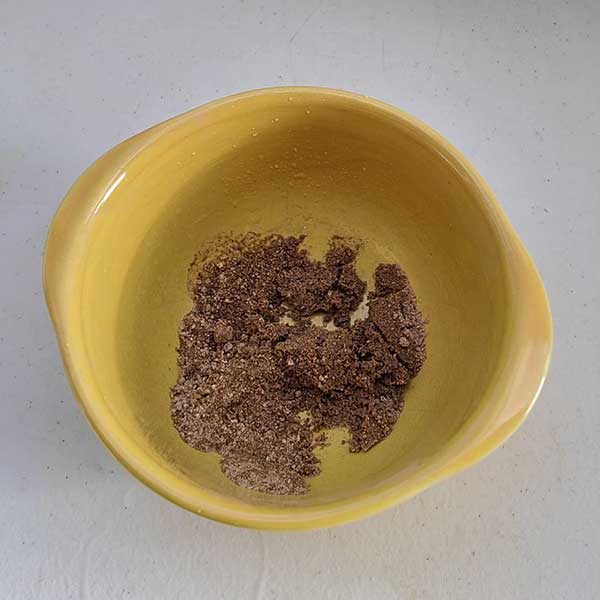
Step 1
Lightly moisten some clean sand. Make sure it is not too wet.
-
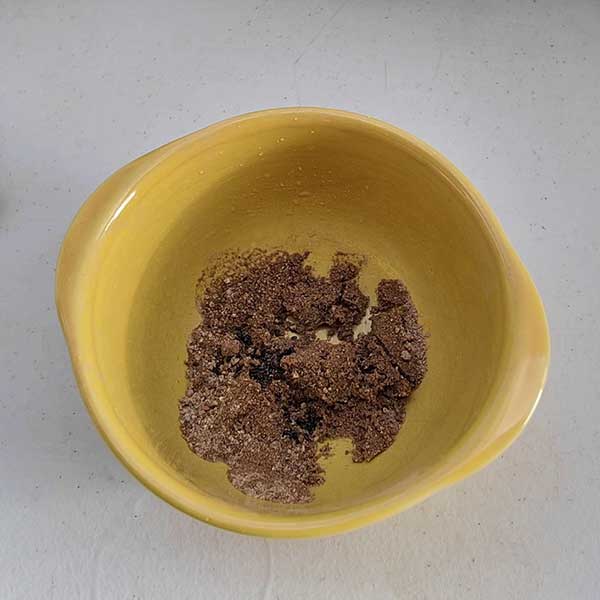
Step 2
Mix your seeds with the moist sand.
-
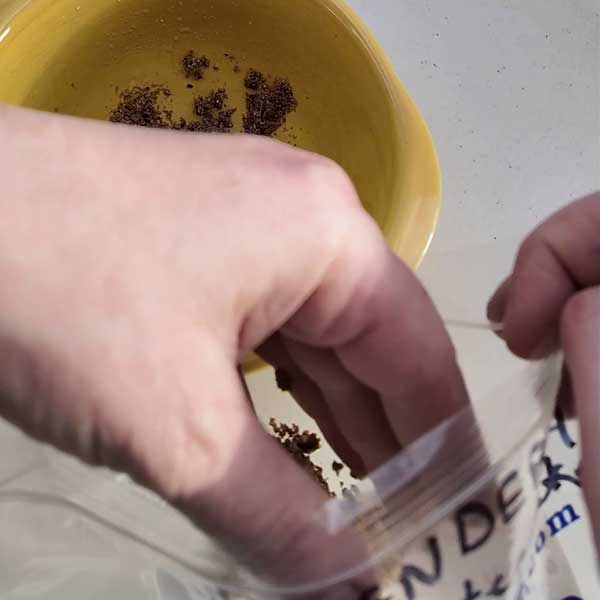
Step 3
Store your sand in an airtight container like a zip-top bag. Make sure to label and date your container.
-
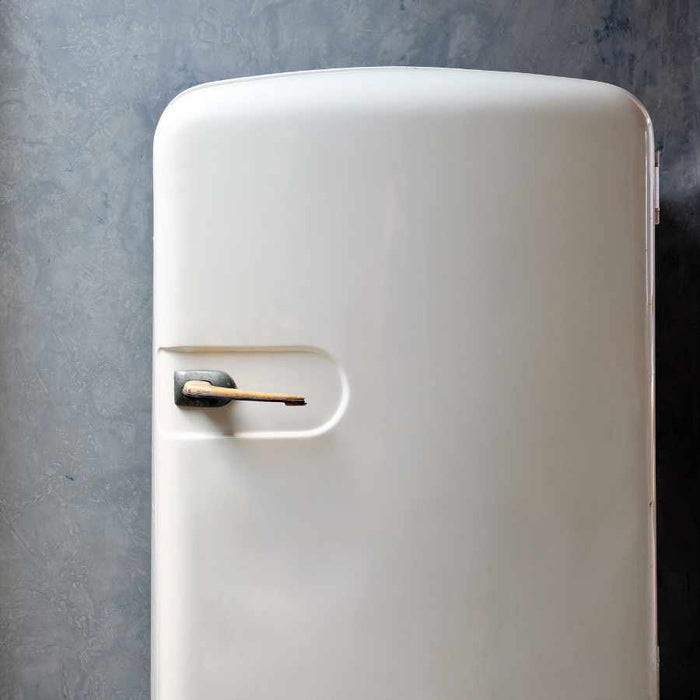
Step 4
Refrigerate your sand and seeds for 2 to 4 weeks (or more, depending on the information on your seed packet)
Support Native Habitats
- Supports Local Ecosystems and Biodiversity: Native plants are uniquely adapted to the local climate and soil conditions, forming the foundation of healthy ecosystems. They provide essential food, shelter, and breeding grounds for a wide array of native wildlife, including pollinators like bees and butterflies, birds, and beneficial insects, which helps to maintain and enhance local biodiversity.
- Requires Less Maintenance and Resources: Once established, native plants typically require significantly less water, fertilizer, and pesticides compared to non-native ornamental plants. Their deep root systems improve soil health and water penetration, reducing runoff and erosion, and their natural resistance to local pests and diseases minimizes the need for chemical interventions, saving time, money, and environmental impact.
- Contributes to Climate Resiliency and Conservation: By supporting a healthy native plant community, you are helping to create more resilient landscapes that can better withstand the impacts of climate change, such as extreme weather events. Growing native plants also plays a crucial role in conserving local plant genetics, preserving the natural heritage of a region, and providing critical habitat corridors for wildlife facing habitat loss.
- Detailed Growing Information: Paper seed packets include clear planting instructions, germination tips, and seed-saving info, great for beginner or experienced gardeners growing vegetables, herbs, flowers, or native plants.
- Trusted USA Seed Company: Family-owned business providing heirloom, non-GMO, open-pollinated seeds; always fresh, untreated, rigorously tested, and expertly packed for long-term storage and gardening success across all experience levels
Frequently Asked Questions
What are heirloom seeds?
What are heirloom seeds?
Heirloom seeds are the types of seeds your grandparents grew. These varieties have been passed down from generation to generation. They’re old reliable open-pollinated varieties that aren’t typically grown commercially. Instead, they have a rich history that predates modern breeding techniques.
You can learn more about open-pollinated, heirloom, and non-GMO seeds in our Survival Garden Training blog.
Where are Survival Garden Seeds sourced?
Where are Survival Garden Seeds sourced?
The majority of our seeds are sourced in the United States, with a few exceptions when the seed is difficult to source domestically. Whenever we do have to source outside of the US, we ensure our seeds are safe to grow, non-GMO varieties that meet our standards for germination and reliability.
Are your seeds treated?
Are your seeds treated?
No, we do not pre-treat our farmer seeds. All of our garden seeds for sale are untreated, open-pollinated, non-GMO, and heirloom varieties. They are kept in temperature-controlled cooler storage until they are packed and shipped to keep them pest and disease-free.
In what zones can I grow your seeds?
In what zones can I grow your seeds?
The seeds in our collections are specifically chosen from varieties that can be successfully grown from Zone 3 to Zone 10 USDA Hardiness Zones. However, individual varieties have specific needs to thrive in different environments. Each seed pack has optimal temperatures for germination and instructions on seed starting. Consult local frost dates to plan your garden and get the most out of your seeds.
What is the shelf life of these gardening seeds?
What is the shelf life of these gardening seeds?
Our seeds will generally last for 3-10 years if they are appropriately stored in a cool, dry place. However, we encourage you to grow your survival seeds within a year or two of purchase. This yields the best germination rates possible and also gives you more experience growing survival food now. At the end of the growing season, follow the instructions on the back of each packet for saving seeds for future gardens. These new seeds for survival will be more adapted to thrive in the growing conditions where you are.
